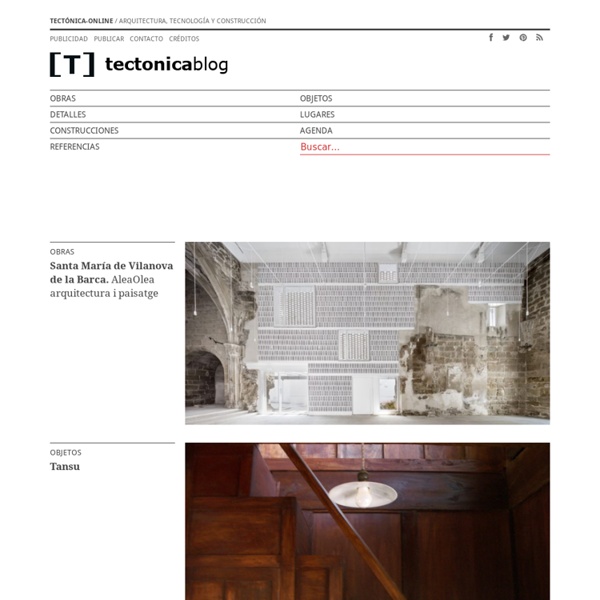



Plataforma Urbana DG Arquitecto Valencia ARQUITECTURA Y EDUCACIÓN 10/10 _ Bonsai arquitectos Con el post de hoy terminamos la serie de #eudarq10 que con tanta ilusión y entusiasmo se ha desarrollado a lo cargo de estos casi 3 meses en nuestro blog. Mil gracias a todos los participantes, !ha sido de lo más enriquecedora! Así que, os animamos a echar un ojo a este último post firmado por la pareja de arquitectos, Eva Chacón y Luis Llopis. 5 capacidades para la formación del arquitecto La Universidad actual forma arquitectos preparados para hacer frente a un abanico enorme de posibilidades, pero con perfiles de especialización bajos, no aptos para competir en un mundo donde la información fluye a gran velocidad, y donde la clave es aprender a aprender, y estar preparado para el cambio, para la mutación. En la ‘cadena de producción’ académica, ¿quién se plantea seriamente qué tipo de profesionales demanda la Sociedad? Mientras tanto, en la calle, otras profesiones nos ganan la carrera, nos la siguen ganando todos los días. Capacidad de discernimiento.
flores en el ático Pedacicos Arquitectónicos List of architecture magazines List of notable architecture magazines English or multilingual[edit] Other languages[edit] Architecture and Construction Magazine فصلنامه معماری و ساختمان (fa)طراح (fa) The first Scientific Journal of Architecture (and all other aspects of Design).[1]AG magazin Serbian magazine for construction.Arquitectura y Diseño Spanish magazine for contermporary architecture and designCriticat french architecture journalDeutsche Bauzeitung German monthly, est. 1867MANZAR (Landscape (paysage)), Persian: منظر (fa) the Scientific Journal of Landscape[2]Naghsh-e No-e (The New Design, Persian: نقش نو) First Persian weekly for contemporary architecture and design in Iran References[edit]
a f a s i a multiples estrategias de arquitectura drivers of change | Arup Foresight Drivers of Change investigates the key global issues and trends driving change in our societies and markets. It is one of the most well-known and comprehensive publication series of its kind. The cards are an effective way of raising awareness about our environment – both man-made and natural. They help initiate conversations, act as workshop materials, provide a foundation for further study and serve as an input for strategy and innovation processes. A compilation of seven of the above card sets was published by Prestel in 2009. Please contact us if you would like to learn more about Drivers of Change or order a set of printed cards. Drivers of Change Programme Drivers of Change communicates research, trends, and questions about the future. A short movie introducing the drivers of change cards and some of the key issues they raise. Other Drivers of Change Editions drivers of change 2006 This first set of Drivers of Change cards was published by Editorial Gustavo Gili in 2006.
Del tirador a la ciudad FOTO: Jonas Lindsedt. Escalera de Charlie Styrbjörn (Thonet) El alemán Michael Thonet fue un pionero. En 1849 consiguió plegar haya maciza empleando vapor y así convirtió el proceso artesanal de fabricar sillas con asientos y respaldos curvos en un proceso industrial. A la silla Número 1 diseñada por el patriarca de esa familia en 1849, y todavía en producción, le seguirían muchos modelos (llegaron a vender hasta 980) firmados por los más destacados arquitectos del momento. Así, la empresa austríaca Thonet fue pionera a la hora de dar el paso de la artesanía a la industria y hoy, 165 años después -y desde hace un año propiedad de un grupo italiano-, la firma parece encaminada a seguir abriendo caminos eligiendo, en esta occasión, la dirección opuesta: el paso atrás para poder adelantar de nuevo.
n+1 | Aquí también hay que leer compulsivamente (LFC) STEPIEN Y BARNO Llevamos un tiempo recopilando empresas de materiales de construcción e intentándolas agrupar por sectores. Muchas de ellas las conocemos de nuestros propios proyectos, otras de oídas y otras se han colado en el último momento. Como particularidad, podéis ver que hemos intentado meter varios perfiles de sus redes sociales; todavía faltan muchos, pero ya iremos completando. De momento, compartimos con vosotros la información por si os puede ser de utilidad. De todas formas, el directorio pretende ser algo abierto, así que, os animamos a que nos dejéis en los comentarios otras empresas que puedan ser interesantes. …………… [ Sigue leyendo ] » Share on Facebook Después del estupendo comienzo de la serie #Eduarq10, gracias a Blanca Espigares, hoy pasamos el testigo a José Ramón Hernández (arquitectamoslocos). A su vez, como siempre, os animamos a dejarnos vuestra opinión sobre el tema. …………… [ Sigue leyendo ] » Share on Facebook Esperamos que sea de vuestro interés el post. …………… [ Sigue leyendo ] »
HABITAR dibujas con agua en las barras de los bares